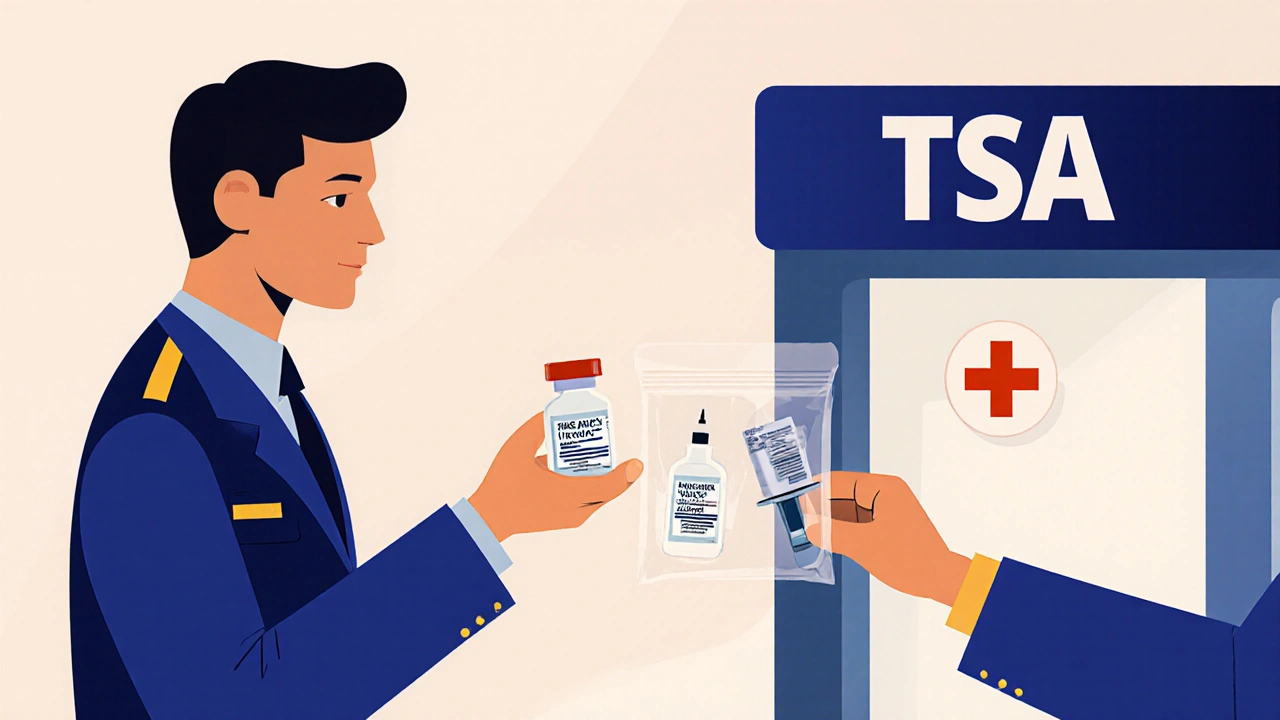 19
Nov,2025
19
Nov,2025
Clearing airport security with liquid medications doesn’t have to be stressful
If you rely on insulin, liquid pain relievers, chemotherapy drugs, or other essential medicines in liquid form, you’ve probably worried about getting through airport security. You’re not alone. Millions of travelers carry medically necessary liquids every day, and the rules are actually simpler than most people think - if you know what to do.
The key is this: liquid medications are exempt from the 3.4-ounce rule. That means you can bring a full bottle of insulin, a 100-milliliter vial of epinephrine, or even a large container of liquid antinausea medicine - no matter how big - as long as it’s for your personal medical use. But here’s the catch: you still need to declare it. Skipping this step is the number one reason people get delayed.
What counts as a medical liquid?
Not every liquid you carry is treated the same. The TSA allows exemptions only for medications that are prescribed to you or necessary for your health. That includes:
- Insulin and other injectable medications (including glucagon emergency kits)
- Prescription liquid painkillers, anticonvulsants, or antibiotics
- Prescription creams and ointments (like steroid creams for eczema)
- EpiPens and auto-injectors (even though they’re not liquid, they’re treated the same way)
- IV fluids prescribed for dehydration or chronic conditions
Things that don’t qualify: over-the-counter cough syrup (unless prescribed), vitamins in liquid form, or cosmetic serums. If it’s not on your prescription label, TSA may treat it like regular toiletries - and that means it has to fit in your 1-quart bag.
How to pack your meds for smooth screening
How you pack your medications matters just as much as what you pack. Here’s how to do it right:
- Keep everything in its original pharmacy-labeled container. The label must show your name, the drug name, and the prescribing doctor’s info. This is non-negotiable. A 2025 TSA internal report found that 63% of delays were caused by unlabeled bottles.
- Put all your liquid meds in one clear, resealable plastic bag - but don’t mix it with your shampoo and toothpaste. Keep it separate. This saves time and makes it easier for officers to spot.
- Store the bag in an outer pocket of your carry-on. Don’t bury it under clothes or electronics. You’ll need to pull it out quickly.
- If you’re carrying ice packs for refrigerated meds, make sure they’re frozen solid when you get to security. Once they start melting, they’re treated like liquid and must be declared separately.
Pro tip: If you’re carrying multiple vials or syringes, bring a printed list with drug names, dosages, and your doctor’s contact info. It’s not required, but it cuts screening time by nearly half.
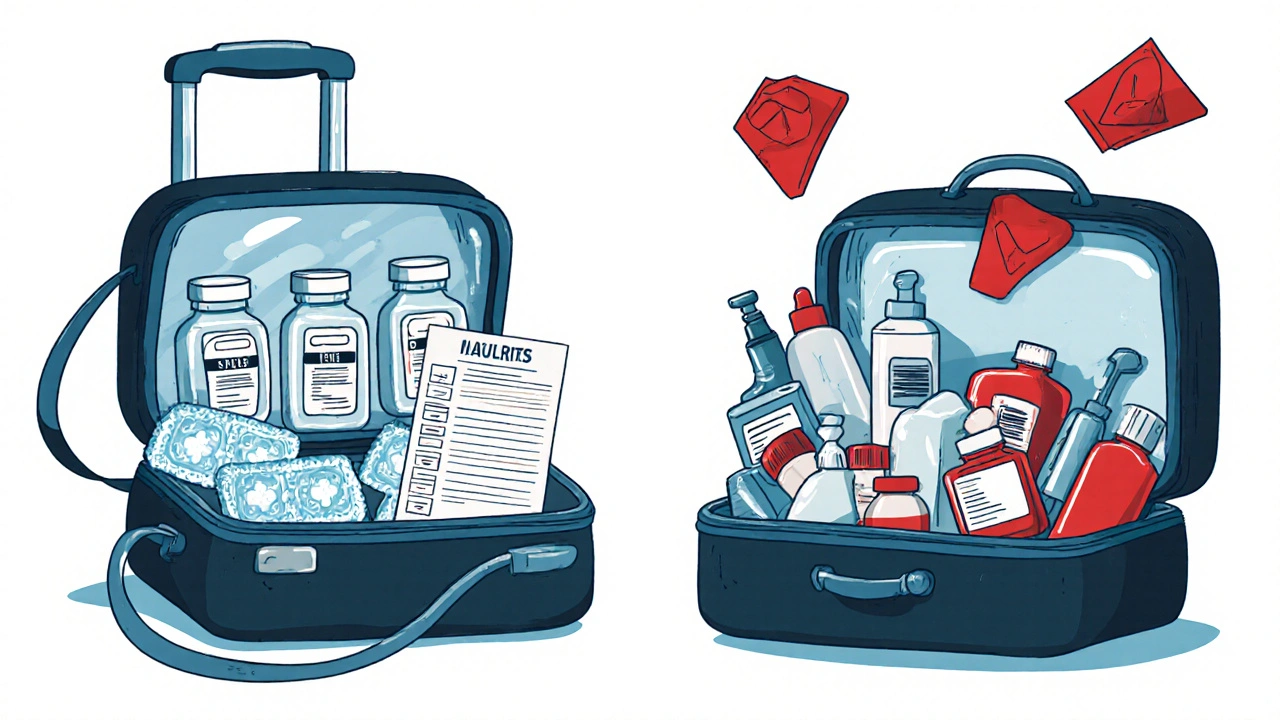
What happens at the checkpoint?
When you reach the security line, don’t wait for the officer to ask. As soon as you get close, say: “I have liquid medications that need to be screened.” That’s it. No need to over-explain.
Officers will usually ask you to remove the bag from your carry-on and place it in a bin by itself. They might swab it for residue or run it through a separate scanner. You can request a visual inspection instead of X-ray if you’re concerned - just ask before your meds go on the belt. Most officers will honor that request.
Don’t be surprised if they ask for your prescription. That’s normal. But you’re not expected to hand over your entire pill bottle. Just show them the label. If you have a digital copy of your prescription on your phone, that’s fine too.
Insulin users: You can bring as many vials, pens, or pumps as you need. No limits. Just make sure your cooler or ice pack is declared. TSA allows coolers up to 8x6x2 inches, and partial melting is okay - as long as the ice isn’t dripping everywhere.
What to avoid at all costs
Here are the biggest mistakes travelers make - and how to skip them:
- Transferring meds to unlabeled containers. A 2025 Healthline survey showed 89% of people who kept meds in original bottles had zero issues. Only 43% of those who used pill organizers or homemade containers got through without delays.
- Putting meds in checked luggage. If your bag gets lost, you lose your medicine. Always carry it with you.
- Forgetting documentation. If you’re carrying controlled substances like opioids or stimulants, bring your prescription or a letter from your doctor. TSA doesn’t ban them, but they’ll ask questions.
- Waiting until the last minute. First-time travelers spend an average of 2.7 hours preparing. Don’t wait until you’re at the airport to figure it out.
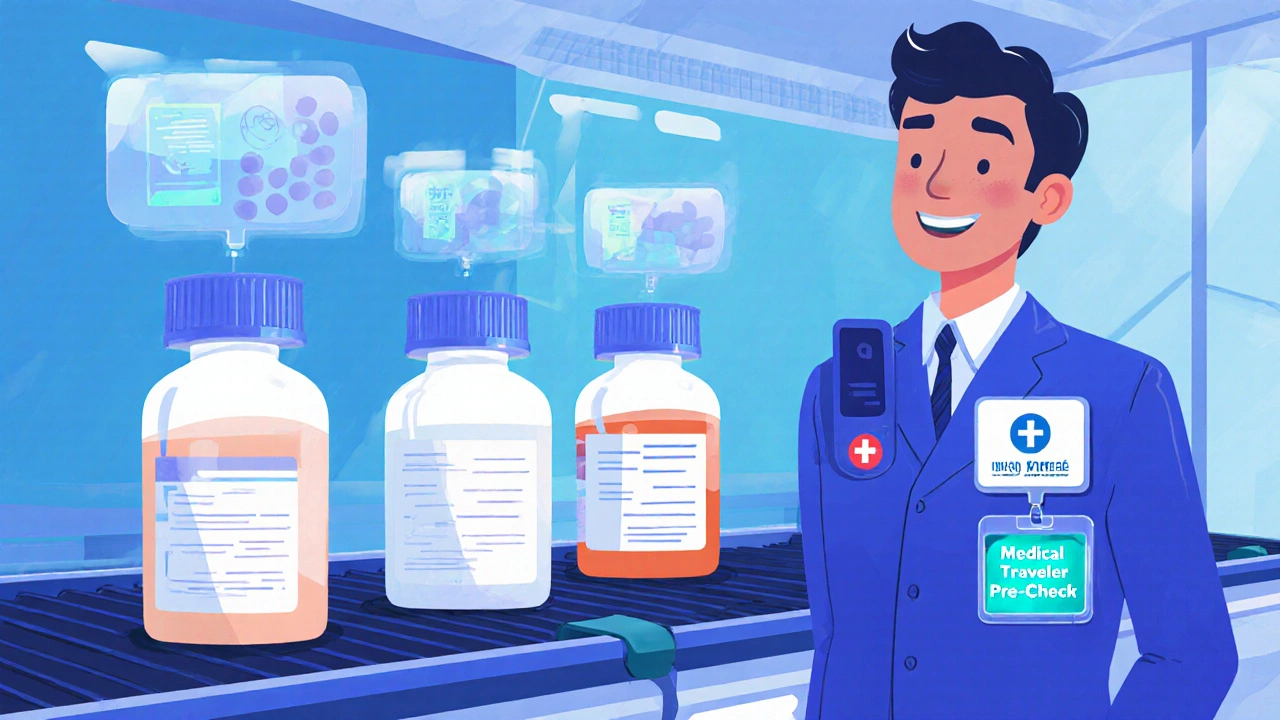
Why some people get delayed - and how to avoid it
Even if you do everything right, you might still face a longer wait. Why? Because not every TSA officer knows the rules.
Reddit user u/DiabeticTraveler reported being held up for 22 minutes at Atlanta’s airport because the officer didn’t recognize a glucagon kit. Another traveler in Chicago got through in under two minutes with the same items. It’s inconsistent - but not random.
The best way to reduce delays: be calm, clear, and prepared. If an officer seems unsure, politely say: “According to TSA guidelines, prescription medications are exempt from the 3-1-1 rule. I’m happy to show you the label or my prescription.” Most officers will check their tablet or call a supervisor - and you’ll be fine.
According to TSA’s Q1 2025 passenger survey, 87.4% of travelers reported satisfaction with the process - but that number drops to 72.1% for those carrying three or more liquid meds. Preparation is the difference between a 2-minute stop and a 15-minute headache.
What’s changing in 2025 and beyond
The TSA is actively improving how they handle medical liquids. In March 2025, they announced the Medical Traveler Pre-Check program - a voluntary registry for frequent travelers with chronic conditions. Starting September 1, 2025, pilots will launch at 12 major U.S. airports. Registered travelers will get a faster lane with dedicated screening.
By late 2026, AI systems will help identify medications automatically at 50 major airports. Trials in Dallas-Fort Worth cut screening errors by 41%. That means fewer misidentifications and less waiting.
For now, though, the system still relies on human judgment. That’s why your preparation - labels, documentation, and clear communication - is your best tool.
Final checklist before you leave
Use this before your next flight:
- ☑ All liquid meds in original labeled containers
- ☑ Medications in a separate clear bag (not mixed with toiletries)
- ☑ Printed or digital list of drugs, doses, and doctor info
- ☑ Prescription or doctor’s note for controlled substances
- ☑ Ice packs frozen solid (if refrigerated meds)
- ☑ Contact info for your pharmacy or doctor saved on your phone
- ☑ Declared to TSA officer before screening begins
Follow this, and you’ll breeze through security - no stress, no surprises.
Can I bring liquid medication in my checked bag?
You can, but you shouldn’t. Checked luggage can be lost, delayed, or damaged. If you rely on daily insulin or emergency meds like EpiPens, you need them with you at all times. Always carry liquid medications in your carry-on.
Do I need a doctor’s note for liquid meds?
Not always - but it’s smart to have one. If your medication is a controlled substance (like opioids or stimulants), or if the label is unclear, a doctor’s note can prevent delays. Even for non-controlled meds, a note helps if an officer is unsure.
Can I bring ice packs for my insulin?
Yes. Frozen ice packs are allowed, but they must be declared. Once they start melting, they become liquid and must be screened separately. TSA allows coolers up to 8x6x2 inches. Partial melting is fine - just don’t let water leak onto the conveyor belt.
Are there limits on how much insulin I can bring?
No. There’s no limit on the amount of insulin or other prescription liquids you can bring, as long as they’re for personal medical use. You can carry multiple vials, pens, or pumps. Just make sure they’re labeled and declared.
What if I’m traveling internationally?
TSA rules apply only in the U.S. Other countries have their own rules. Before you fly, check the airline and destination country’s regulations. For example, the UK and EU allow similar exemptions, but some countries require a letter from your doctor. Always carry your prescription and a translated version if needed.
Can I bring liquid meds on a private jet or charter flight?
Yes - and it’s usually easier. Private flights don’t go through TSA screening, so you won’t face the same rules. But you still need to follow your country’s laws. If you’re flying internationally, customs may ask about your meds. Keep labels and prescriptions handy.

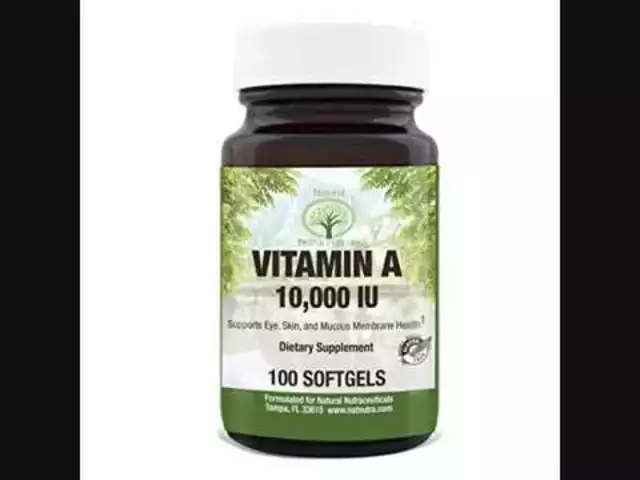
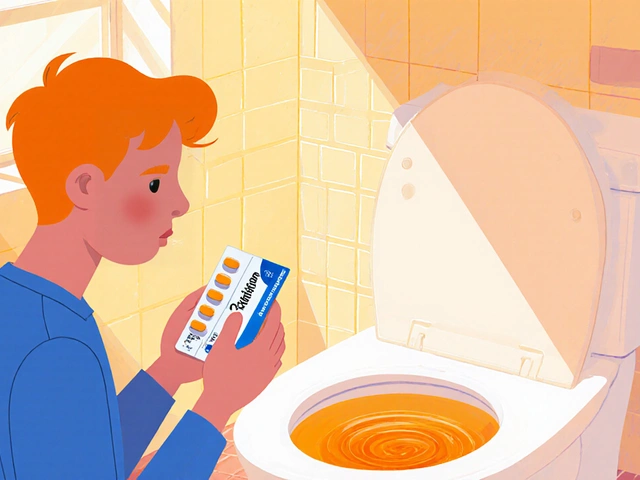
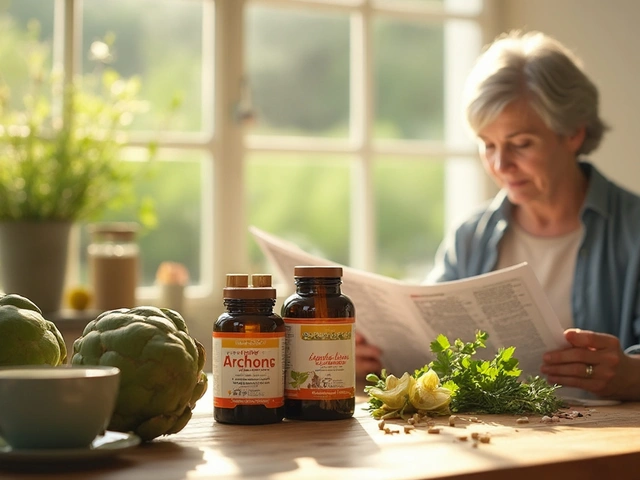
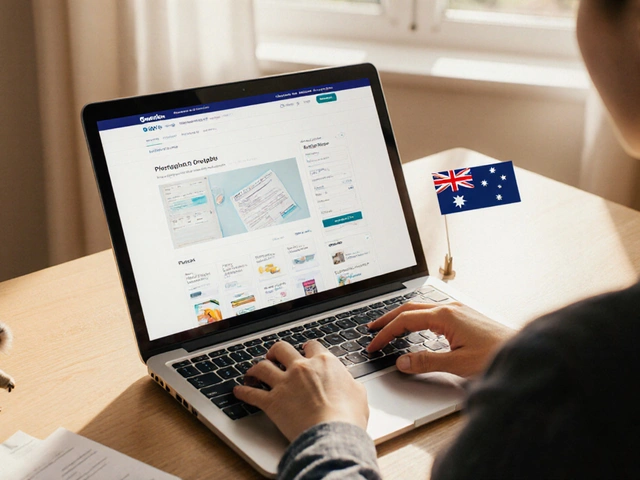
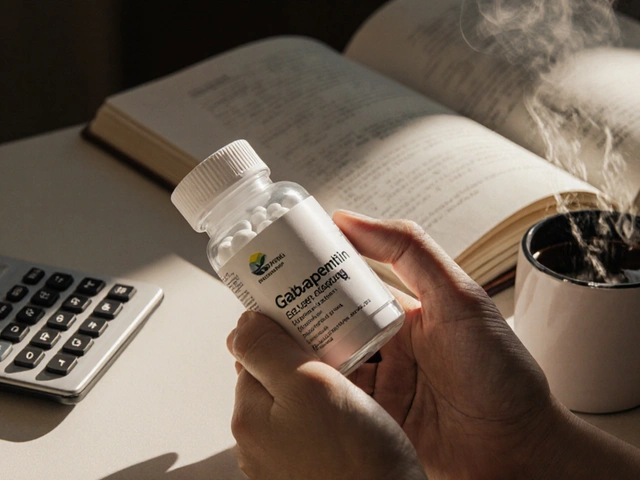
I literally cried when I got through security with my insulin pump last time 😭 They didn’t even ask for anything. Just said "oh, meds? Cool." 😌
Bro, if you’re carrying GLP-1 agonists or insulin pens, just slap that pharmacy label on it like your life depends on it - because it kinda does. TSA’s not out to get you, but they ain’t got time for guesswork. Pro tip: keep the script on your phone too. Saves 10 mins.
This article is dangerously misleading. The TSA does NOT have a formal exemption policy for liquid medications. They have a "guideline" that is inconsistently enforced. You are putting people’s lives at risk by implying this is a guaranteed process. I’ve seen diabetic passengers detained for 45 minutes because an officer "didn’t believe" the label was real. This is not advice - it’s a gamble.
Lmao so now we're supposed to trust TSA with our life-saving meds? 😏 I bet 90% of these "success stories" are from people who just didn't get pulled aside. I've had my EpiPen confiscated because "it looked like a vape." You think they care about your diabetes? They care about their 3pm coffee break.
in india we just carry all meds in original bottle and no one cares really but in usa u gotta be like a lawyer with your pills lol. i once had a guy ask me for my doctors phone number and i was like bro i dont even know his number its on the bottle 🤷♂️
Let me guess - this whole guide was written by someone who works for a pharmaceutical company. TSA doesn’t care about your meds. They care about compliance. And compliance is just a word they use to justify stopping people. You think they’re going to let you through with 20 vials of insulin? Try it. You’ll be in a back room for an hour while they call five supervisors. This is theater. Don’t fall for it.
I took my 8oz bottle of liquid morphine through ORD last month. Didn’t say a word. Just held it up like a trophy. Officer just nodded, said "good luck," and waved me through. I swear I could’ve brought a whole pharmacy and they wouldn’t’ve blinked. It’s all about confidence. And labels. Always labels.
I’ve flown with my son’s seizure meds through Heathrow, JFK, and Sydney. The key is always calmness. Not the paperwork, not the labels - just being polite and clear. Officers are people too. They don’t want to make your day worse. A simple "I need this for my child’s epilepsy" goes further than any form ever could.
The real issue isn’t the rules. It’s the assumption that the system is designed for human needs. It’s designed for efficiency. And efficiency doesn’t care if you’re dying. Labels, declarations, documentation - these aren’t safeguards. They’re rituals we perform to appease machines that don’t understand pain. We adapt because we have to. Not because it’s fair.
just a heads up - if you got a pump or insulin pen, always carry the manufacturer’s manual in your bag. i once had an officer ask for "proof it was medical" and i pulled out the medtronic manual with the diagram of how it works. he was like "ohhh okay" and just waved me. also typos are fine. i wrote "insulin" as "insuline" on my list and no one cared.
why do u need so much liquid anyway? why not just take pills? its like u wanna be a walking pharmacy lol
OMG I JUST GOT THROUGH SECURITY WITH MY CHemo IV BOTTLE AND THE OFFICER GAVE ME A HUG 😭 I WAS CRYING AND SHE SAID "I HAD MY MOM GO THROUGH THIS TOO." WE ALL JUST STOOD THERE AND CRIED FOR A MINUTE. THIS IS WHY WE NEED MORE HUMANITY IN SYSTEMS.
This is a PR piece disguised as helpful advice. The TSA has no obligation to accommodate you. You're lucky if they don't throw your meds in the trash. And don't get me started on "digital prescriptions" - that’s a fantasy. If you’re not carrying the physical bottle with the original label, you’re gambling with your health. Stop pretending this is easy.
to the guy above me - i had my insulin pump flagged at LAX because the label was faded. i showed them the digital script on my phone and they called the pharmacy. they verified it in 90 seconds. the officer even said "you’re doing it right." it’s not about luck. it’s about being ready. and yeah, i misspelled "pharmacy" in my text but they still believed me. human beings are still in the loop.